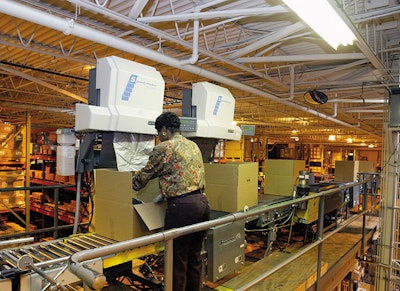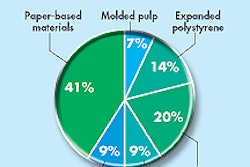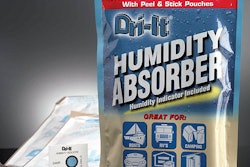What if you could improve the productivity of your packaging operation, free up space in your warehouse, and decrease returns without increasing your cost for materials? It may seem like a tall order, but Sealed Air helped make it a reality at Cooper Hand Tools’ distribution center in Apex, NC.
Cooper offers premium quality tools for industrial, commercial, and consumer markets, including adjustable wrenches, soldering products, and cutting tools. The company distributes tools all over the world.
“We were using paper dunnage pulled from rolls to package our tools,” says David Looper, operations supervisor at Cooper. “But changing the heavy paper rolls put a real strain on our packaging operators. We needed packaging materials that would alleviate exertion for the operators, but we didn’t want to spend more,” says Looper. “Sealed Air contacted us to discuss alternative packaging options.”
Sealed Air’s Bob Hagmann met with Karen Falvey, Cooper’s vice president of logistics, to gain knowledge of Cooper’s packaging needs. Hagmann suggested the SpeedyPacker® foam-in-bag system with Instapak® UltraLite®, a light-duty void-fill foam capable of expanding up to 280 times from its liquid state.
The SpeedyPacker foam-in-bag system dispenses a controlled amount of Instapak foam into a sealed film bag. When placed in a carton, the foam expands to conform to the shape of the contents, creating a protective cushion. Within seconds, the foam sets and locks the products in place. Falvey liked the SpeedyPacker solution because, unlike paper dunnage, the solid cushions prevent items from shifting during shipment, greatly reducing the risk of damage.
Cooper tested the system for one month using cases that contained 20 to 25 tools and weighed up to 50 lb each. By comparing cartons packaged with paper dunnage to cartons packed with Sealed Air’s foam, Falvey discovered that by using the foam, the weight of each case was reduced by half a pound.
While testing, Cooper also determined that the SpeedyPacker system improved the productivity and efficiency of its packaging operation. Using the system enabled Cooper to process more than 1겨 packages per day with only one operator.
One reason for this efficiency is that the heavy paper rolls used previously were replaced 15 to 18 times a day compared to the SpeedyPacker film rolls, which are half the weight and only need to be replaced every other day. In addition, the Instapak bulk tanks, which contain the foam formulations, only need to be changed every four to five weeks.
Customers like the packs, too
“The packages are also well received by our customers,” says Cooper distribution manager Charles Schlegelmilch. “The foam cushions help prevent damage to the tools during shipment and can be reused by our customers, if needed.”
Since switching to the SpeedyPacker system, Cooper has seen a reduction in the number of returned items. But if a customer does decide to send back tools, the foam packaging can be reused to package the tools and help ensure that the tools arrive safely.
According to Schlegelmilch, converting the packaging facility to the foam-in-bag system was easy because the Instapak bulk tanks were installed over the weekend when the packaging facility was closed. Consequently, there was no downtime in workday productivity. The system was also easy for operators to learn.
The paper dunnage previously used for packaging occupied 12 pallets, while the SpeedyPacker system’s two bulk tanks and skid of film take up just three pallets.
Cooper uses a computerized fulfillment process. Once a product order is received, a computer screen displays which of the seven corrugated case sizes needs to be used for packaging based on the amount of items in the order and the estimated weight of the tools in the carton.
After the tools are placed in the appropriate case, it’s sent by conveyor to the packaging area. There, an operator determines which of the six available preset bag sizes to use. With the push of a button, the SpeedyPacker system dispenses a controlled amount of foam into the film bag and seals the bag. The bag of rising foam is then placed on top of the tools in the carton where the foam begins to conform to the shape of the items inside. The operator folds the sides of the case down and it travels on the conveyor through the automatic case sealer. The packing list is placed manually on the case, which is sent to the loading dock for distribution. —Pat Reynolds


























